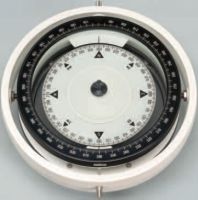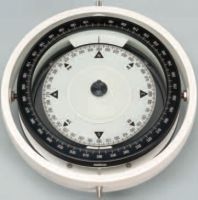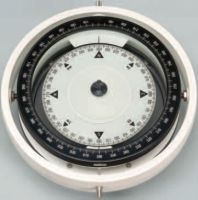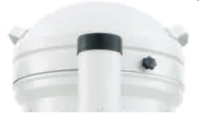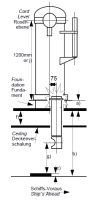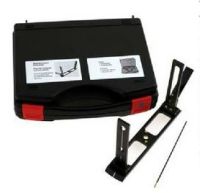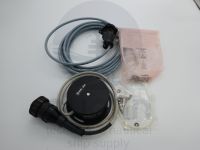How does the Magnetic Compass work?
Besides today's GPS, the gyro compass and the magnetic compass are the most important types of compasses for navigation in shipping. Today, the magnetic compass is prescribed as an emergency compass. It is usually placed on the top of the deck above the bridge in the midship line for compensation purposes.
The use of the magnetic compass does not require electronics or any other power supply, which gives it an advantage over more technical navigation devices. In addition, determining course angles is often easier and more accurate as magnetic orientation is used.
Another advantage is the widespread usability of the magnetic compass. While other navigation systems fail above a certain water depth because light, high frequency signals and navigation satellites are absorbed by the water, the magnetic compass works here as well. The earth's magnetic field (also geomagnetic field) is capable of penetrating the water, providing navigation for submarines and divers.
The errors of a Magnetic Compass
Unfortunately, the magnetic compass orientation has two serious errors that must be taken into account during navigation:
- The declination (also called variation)
- The deviation (error caused by iron masses on board)
The Declination
Since the magnetic North Pole does not coincide with the geographic North Pole, and lies about 1000 km north of Canada, the result is a misalignment. Besides, the magnetic poles change by several km per year. At the true north, the magnetic compass would point to the South. High northern latitudes lead to errors up to 35 degrees. In the North Sea and Baltic Sea however, the errors are only a few degrees. In the nautical charts, lines of the same declination are drawn – with these lines you can find out the declination for your current location, which helps you to navigate correctly. The declination has positive and negative signs depending on the location.
The Deviation
Another error is that the deviation of the reading is also possible. If other magnetic fields are near the compass, they distort the orientation of the magnetic compass needle (so-called magnetic field effects). Such a deviation can occur with magnetic or magnetizable objects that are loaded on the ship as well as with flowing or alternating current. Since ships consist of soft iron masses, which have their own magnetism, the magnetic compass is deflected. It is so large that it would be useless if it were not compensated. The compensation is done by bar magnets, which are placed at 45 and 135 degrees under the rose, so that they compensate for the diagonal magnetic fields.
Magnetic compass at sea
The most important thing a compass should do at sea is steer the ship on a fixed course with an accurate reading. Even if there is an error of a few degrees, it can make a difference, especially while traveling long sea passages. Thus, with an inaccurate compass, delays in shipping can occur. Furthermore, it is used to scan celestial and terrestrial objects for navigational purposes. The magnetic pole needs to be accurate to travel with precision. Get your compass now at Querin!

